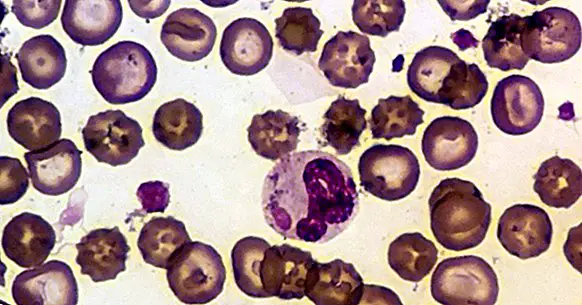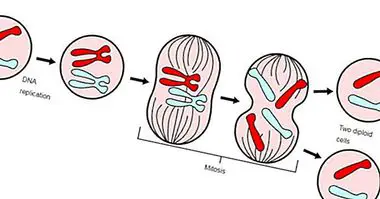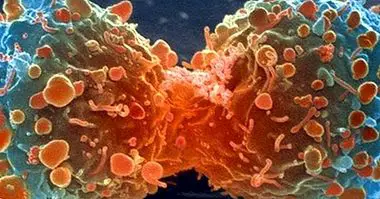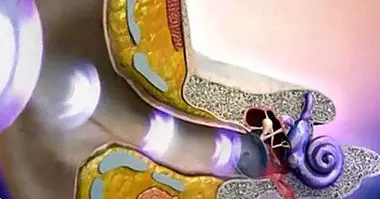Erythrocytes (red blood cells): characteristics and functioning
Erythrocytes, also called red blood cells or red blood cells, are the cells that are found in a greater proportion in the bloodstream. These are fundamental anatomical units for all our vital functions. Among other things transport oxygen and distribute nutrients through the body .
We will see below what erythrocytes are, how they are produced and what their main functions are.
- Related article: "Types of major cells of the human body"
What are erythrocytes?
Erythrocytes are the red cells that make up our blood. In fact, the term "erythrocyte" comes from the Greek "erythrós" which means red, and from the "kytos" which means cell.
Also called red blood cells, erythrocytes are one of the main components of blood , whose functions are essential to maintain the different systems of our body. To analyze this in more detail we will see in the beginning what blood is and what its functions and components are.
Blood and its main components
Blood is the fluid that runs through our body, whose composition is thicker than water, slightly viscous, and its average temperature is 38º C (one degree more than body temperature). The amount in liters of blood that each one of us has depends to a large extent on our size and weight.
Its main functions are transporting oxygen from the lungs to the cells of the body, transporting hormones, providing the cells with specific nutrients, eliminating waste products and keep the body in natural balance (for example, pH and temperature levels).
On the other hand, there are many cells that make up this liquid. 55% of the blood is plasma, a slightly yellow liquid composed of water in 90% and protein, electrolytes, vitamins, glucose, amino acids and other nutrients by 10%. The other 45% of our blood are different types of cells.
99% of this other half is composed of the red cells that we call red blood cells or erythrocytes. The rest (1%) are white cells, also called leukocytes; and platelets , also known as thrombocytes. Thus, 84% of the total cells of the human body are erythrocytes.
- Maybe you're interested: "Blood phobia: everything there is to know about hematophobia"
Functions of red blood cells
The erythrocytes have the shape of small discs with slits. They are flexible, that is, they can bend easily to circulate through the narrowest blood vessels.
Unlike other cells, erythrocytes do not have a nucleus. What they do have is hemoglobin , a protein responsible for transporting oxygen through the blood, and is also responsible for the red color of blood. Among the main functions of erythrocytes are the following:
- Collect oxygen from the air we inhale, and carry it through the blood vessels of the lung to all parts of the body.
- The above is the necessary process for cellular metabolism, generating in turn carbon dioxide as waste.
- They collect carbon dioxide and take it back to the lung , allowing us to expel it when we exhale.
- They release hydrogen and nitrogen, which helps keep the blood PH level stable.
- Through the above, blood vessels expand and blood pressure decreases.
On the other hand, the deficit in the production of erythrocytes, or their accelerated destruction, is what causes anemia ; while an excess in the production of these cells generates polycythemia or erythrocytes.
Process of production of blood cells
The stem cells are responsible for generating the most solid parts of the blood. From a multi-stage development, the stem cells are converted into blood cells or platelets.
Upon completion of their development they are released into the bloodstream, which maintains a quantity of precursor cells that allows its regeneration . This last process is regulated from substances: the hormone erythropoietin (produced in the kidneys) are responsible for the production of red blood cells, and cytokines help the production of white blood cells.
Glucose is essential for its metabolism (since it does not have a nucleus or mitochondria), which means that some of the main pathways are glycolysis and the hemoglobin reductase pathway.
In adults, most blood cells occur in the bone marrow , although in the case of erythrocytes, specifically lymphocytes, maturation occurs in the lymph nodes.
The erythrocytes have a life cycle of approximately 120 days. After this time they decompose in the bone marrow, the spleen or the liver, through a process known as hemolysis. In this process they are conserved fundamental elements of erythrocytes, such as iron and globin, which are subsequently reused .
Bibliographic references:
- Capellera-Garcia, S. and Flygare, J. (2016). Defining the minimal factors required for erythropoiesis through direct lineage conversion. Cell Rep., 14-15 (11): 2550-2560.
- Erythrocyte Etymology (2018). Etymologies of chile. Retrieved October 17, 2018. Available at //etimologias.dechile.net/?eritrocito.
- Erythrocytes (Red Blood Cells) (2014). National Cancer Institute. Retrieved October 17, 2018. Available at //www.ncbi.nlm.nih.gov/pubmedhealth/PMHT0022014/.
- What does blood do? (2015). U.S. National Library of Medicine. Retrieved October 17, 2018. Available at //www.ncbi.nlm.nih.gov/pubmedhealth/PMH0072576/.



















